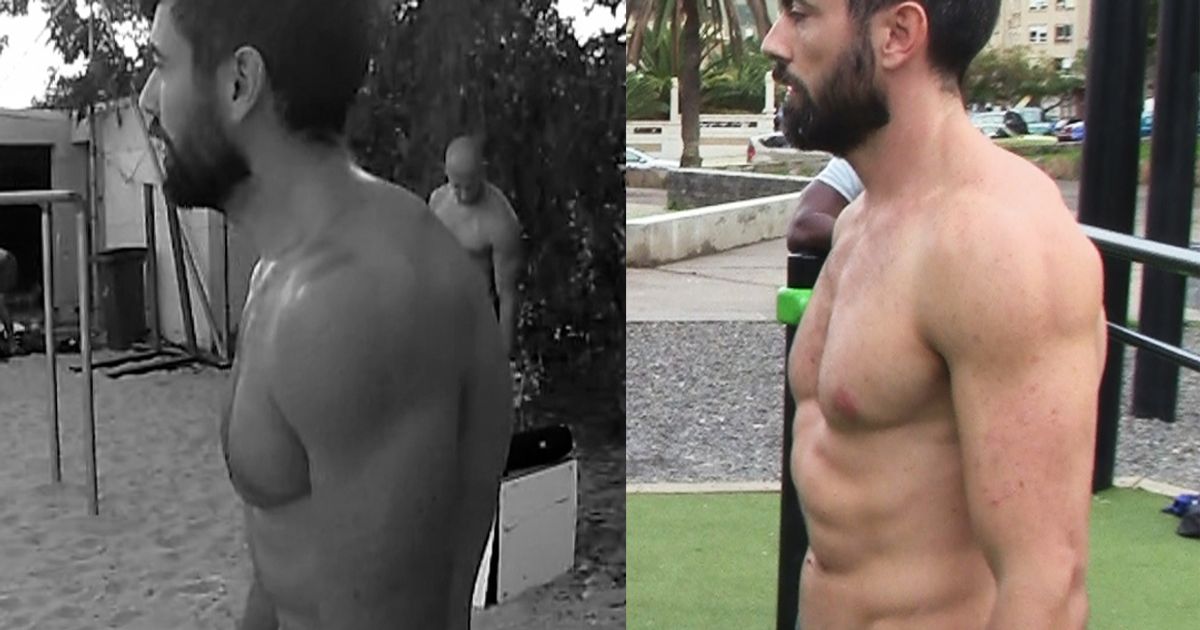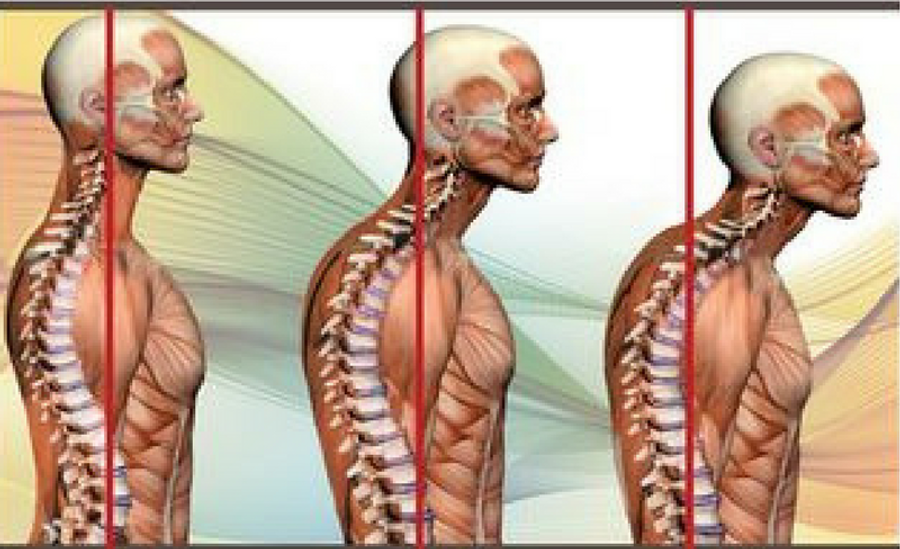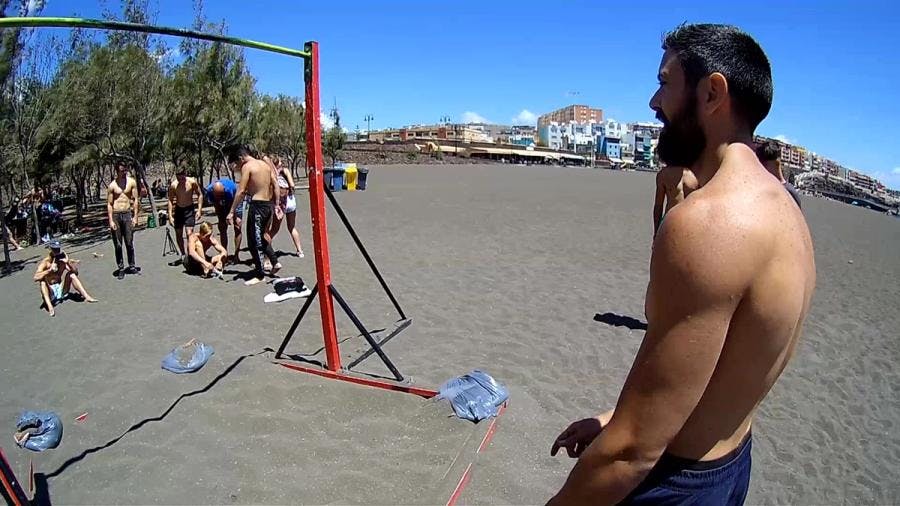
Use your self-talk to improve your training results

In our sport, there is worrying problem that I haven't heard people address that much. If you are lucky to train in a park with other people, you will notice that a lot of them have a really clear postural problem.
I am talking about the syndrome called upper crossed syndrome, or, what is the same, having a rounded upper back. In this article we are going to see all details about this problem, why it happens, how to fix it and my personal experience with it.

This problem consists in having a rounded upper back, with shoulders rotated forward and also forward head. It is really easy to spot in first sight and it creates a non desirable physical appearance.
Any tension or unbalance in our muscles, can shape the way our bones hold together, creating variations in our posture.
In this case, pectorals, and the anterior deltoids (front shoulder), are muscles that favor an internal rotation of our shoulders, specially when their antagonists (medial and lower trapezius and external rotators like infraspinatus and teres minor) are inhibited and have poor tone.
This is easy to understand if you simplify it as follows: muscles on the front of our body produce internal shoulder rotation, and muscles in the back of our body produce external shoulder rotation. But we have an exception to this rule, which is our lats, which are in our back but the produce internal shoulder rotation because they are inserted in the frontal part of our humerus.
This imbalance radiates to our neck in a crossed way, where the frontal muscles or flexors are inhibited, while the upper trapezius in the back is over toned.
If you look to standard calisthenics training and routines, you will see that we train a lot our pecs, lats, anterior deltoids... but medial and lower trapezius, and external rotators are rarely targeted. And if we look at competitive training the problem gets even bigger.

To fix this issue, what we have to do is, first, try to reduce the shortening of the muscles that are internally rotating our shoulders. For this we will use direct stretching exercises. Also, we will stretch other complementary muscles that can have an effect in our posture.
And in the second part, we are getting rid of the inhibition of the external rotator muscles, toning them and improving our nervous system perception of them. To do this, we will select some exercises that directly target medial and lower trapezius and external rotators. Also we will work in some complementary muscles that can have some effect.

In my personal case, because of my hard training in calisthenics, even with competitive goals, I have this postural problem. For a while now people have been telling me to straighten my back and so on, also as I am continuously filming my exercises it became evident in the videos.
That had some impact, specially in the form of pain in my neck, so I decided to try to fix it and improve my posture. I gathered all the info I could and started to work on the routine that I bring you today.
Nowadays the problem is not completely fixed, but I can see a notable improvement, specially when I see myself from the side in the videos, because I am not trying to straighten my back but it much better that before.
The results have come slow, because before working on this routine, I was almost five years in in calisthenics, with the unbalanced training so it has been difficult to correct, but now I am happy with the results and I plan on keep working on it.
Here I give you 3 routines to workout on this issue that will give you great results if you do them regularly:
Join our newsletter
NEW ARTICLES EVERY WEEK
Learn everything you need to know about calisthenics
Start training calisthenics and street workout
